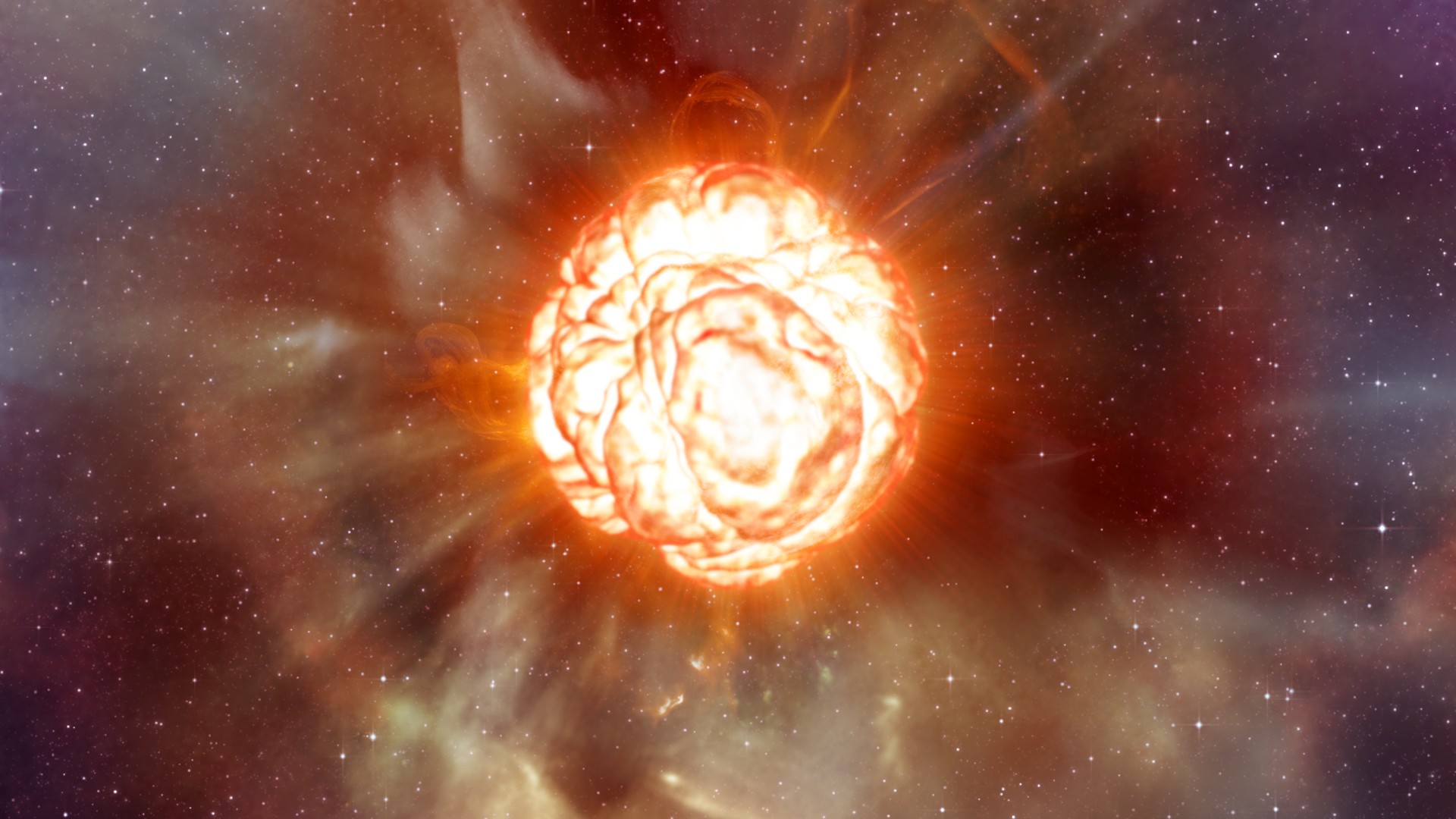Supernova 'alert system' could warn us of dying stars about to explode
As a cocoon of material forms around massive red supergiant stars, it causes dimming that could indicate they are about to explode.

A newly devised 'early warning system' could help warn astronomers when a massive star is about to explode and end its life in a supernova.
As supernovas mark a star's core collapsing to leave behind a neutron star or a black hole, such a 'red alert' could also tip off astronomers aiming to observe the birth of such an exotic stellar remnant.
A team of astronomers from Liverpool John Moores University and the University of Montpellier determined that stars with masses between 8 and 20 times that of the sun in the red supergiant phase would become around a hundred times fainter in visible light just before they explode.
Related: Supernova alert! Astronomers just found a way to predict explosive star deaths
This dimming results from material suddenly gathering and forming a 'pre-explosion cocoon' around the red supergiant star and blocking its light.
"The dense material almost completely obscures the star, making it 100 times fainter in the visible part of the spectrum," lead author of the research and scientist at the Astrophysics Research Institute, Liverpool John Moores University, Benjamin Davies, said in a statement. "This means that the day before the star explodes, you likely wouldn't be able to see it was there."
Previously, scientists had been unaware of how long this accretion of material around the dying star would take. Establishing a timescale for this cocoon accretion is key to solving the mystery of how it forms.
Get the Space.com Newsletter
Breaking space news, the latest updates on rocket launches, skywatching events and more!
Theories surrounding this cocoon formation fall into two categories based on how rapidly red supergiants accrete this material. The 'superwind' scenario suggests that the pre-explosion cocoon is formed as a result of a steady flow of material from the red supergiant for a period of up to 100 years prior to a supernova explosion.
An alternative to this is the 'outburst' scenario in which the pre-explosion cocoon builds as the result of a mass-loss event occurring for the dying star, which would take less than a year.
Davies and his team modeled both of the major cocoon-building scenarios and simulated what a red supergiant star could look like as it is embedded within these pre-explosion cocoons. The team found that both models created large amounts of optically thick circumstellar gas, enough to radically reduce light output from the simulated red supergiants.
The 'superwind' scenario, however, caused the dying star to be conspicuously red and faint for many decades preceding a supernova. This is inconsistent with images that exist of stars that eventually erupted in supernova explosions around a year later because the stars appear normal in these images.
This implies that those stars could not have yet built up their dense light-blocking pre-explosion cocoon and suggests that this material must develop in less than a year.
This represents an extremely fast accumulation of material supporting the outburst scenario and disfavoring the superwind model. Astronomers could use this information and the dimming of a star to go on 'red alert' and get ready to observe a supernova within a year or so.
"Until now, we've only been able to get detailed observations of supernovas hours after they've already happened," Davies said. "With this early-warning system, we can get ready to observe them [supernovas] in real-time, to point the world's best telescopes at the precursor stars, and watch them getting literally ripped apart in front of our eyes."
The team's work is discussed in a paper published in the journal Monthly Notices of the Royal Astronomical Society.
Follow us on Twitter @Spacedotcom or on Facebook.
Join our Space Forums to keep talking space on the latest missions, night sky and more! And if you have a news tip, correction or comment, let us know at: community@space.com.

Robert Lea is a science journalist in the U.K. whose articles have been published in Physics World, New Scientist, Astronomy Magazine, All About Space, Newsweek and ZME Science. He also writes about science communication for Elsevier and the European Journal of Physics. Rob holds a bachelor of science degree in physics and astronomy from the U.K.’s Open University. Follow him on Twitter @sciencef1rst.









